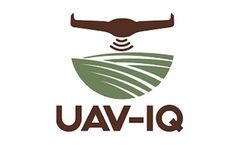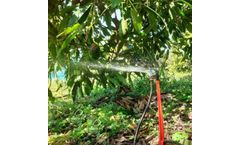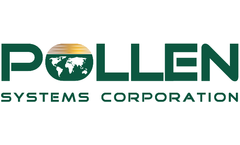Plant Irrigation Articles & Analysis
26 articles found
They discovered that these areas had been under-watered since planting because the irrigation was not appropriate for the soil condition. ...
ByFarm(x)
Our newly built headquarters has incredible rooftop space, and we’re looking to make the most of it. Plant beds with drip irrigation have been constructed so that our staff can contribute to and help maintain a company garden. Sustainability @ Adaptive, along with Karen Robins (Chad and Harlan’s mom!) recently hosted a planting ...
Together with his father Lee, Lane owns an independent consulting business that provides field scouting, plant protection, fertility and irrigation recommendation to both conventional and organic strawberry growers as well as to a growing number of blackberry growers. ...
Avocado is an evergreen tree in the tropical areas of Mexico and Central America. In recent years there has been an increase in cultivated areas, with Mexico as the main country of production, while in Greece there is an increasing dynamic of cultivation in Crete, and generally in the citrus cultivation zones. Avocado is divided into 3 botanical types. The Mexican type that is the most resistant ...
I may be considered new to the team at Pollen Systems, but what I am not new to is California’s Capital, Sacramento. ...
Soft scaping elements included 2600m2 of instant turf, 4500m2 of irrigated garden beds and the planting of 17,000 plants. The team also constructed hardscaping elements such as timber logs and boulders for the playground, and rock lined bioswales to filter and improve the quality of storm water run-off. ...
The technology – simple, fast, effective and economical After the upgrade of the terrain, a nonwoven geotextile is installed above which the firmly anchored units of GeoGlobe are expanded and filled with gravel. The plants are planted and an irrigation-watering system is installed. The result The slope is stable for more than 10 years and ...
In late 2015, a journal article from the European Journal of Plant Pathology was published on research regarding the efficacy of different disinfectants against plant pathogens in irrigation water. ...
Recycled water (RW) is one of the most available water resources with great potential for use in farm irrigation. This experiment was carried out to investigate the use of RW as the irrigation source and its application method, subsurface leaky irrigation (SLI) system or surface irrigation, in an orchard with young olive trees in ...
The principle of non-stop water supply to plants and soil in accordance with their water intake is progressive. Drip irrigation and impulse sprinkling correspond to this principle. Drip irrigation provides optimal water and nutrient regimes directly to the root system of plants. ...
Many respondents seek to adapt farming practices to address current climatic and environmental challenges, especially through planting and irrigation practices. However, adaptability, as well as proactive and reactive measures comes at a price that may not necessarily be recuperated. ...
More progressive is principle of non-stop water supply of plants and soil in conformity to their water consumption. Drip irrigation and impulse sprinkling are based on this principle. The main advantage of drip irrigation is establishment of optimal water and nutritive regime directly in the plant root system. ...
The F and/or TW application increased plant height and plant biomass compared with the control plants (irrigated with water) while no differences were observed in the number of leaves produced. Plants grown with TW + F were thicker than control plants. The addition of F increased fruit ...
The goals of this research were focused on investigating the effects of irrigation with untreated wastewater, ozone-enhanced primary treated wastewaters (O3EPTW), tap water and tap water + fertilizer on the macronutrient content in soil and plant tissues. The effect on plant development was evaluated by growing Lactuca sativa in soils ...
The book Irrigation Systems and Practices in Challenging Environments is divided into two interesting sections, with the first section titled Agricultural Water Productivity in Stressed Environments, which consists of nine chapters technically crafted by experts in their own right in their fields of expertise. Topics range from effects of irrigation on the ...
Reuse of treated wastewater for turf irrigation is often viewed as one way to maximize existing urban water resources. ...
Health risks posed on consumers due to the use of agricultural products irrigated with reclaimed wastewater were assessed by numerical simulation. The analysis is based on defining of an Exposure Model (EM) which takes into account several parameters: (i) the quality of the applied wastewater, (ii) the irrigation method, (iii) the elapsed times between ...
Site-specific management units (SSMUs), similar in soil, plant, and irrigation requirements, are foundational to efficient management in precision agriculture. This concept is applied to management of complex turfgrass sites to improve irrigation practices. An experimental mobile unit mapped two golf fairways' turfgrass (Paspalum vaginatum SW.; ...
Although subsurface drip (SSD) is used as a water-efficient alternative to overhead irrigation in many crops, the effects of SSD on the distribution of bolls on cotton plants (Gossypium hirsutum L.) have not been thoroughly examined. ...
Nonirrigated cuphea received only precipitation, while irrigated plants received supplemental watering to maintain soil water content near field capacity during the study. ...











